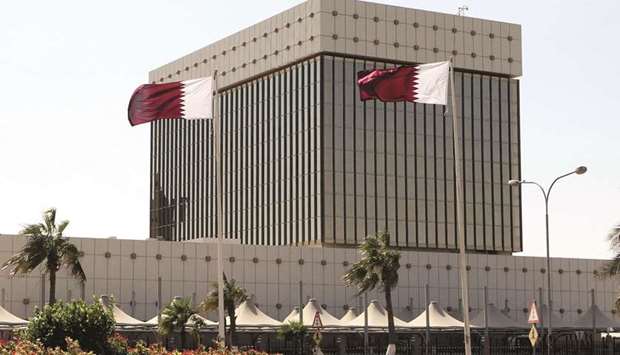Sound initial capital and liquidity positions as well as a flexible response by the Qatar Central Bank (QCB), helped Qatar's banking system to remain “resilient”, according to the Washington-based the Institute of International Finance (IIF).
"The banking system has remained relatively resilient amid the pandemic, helped by sound initial capital and liquidity positions," it said in a report.
The banks remain adequately capitalised with a 17.6% Tier 1 capital ratio and low non-performing loan (NPL) ratio of 2% in 2020, it said.
Indicating sound capital base, the country’s banking sector witnessed progressive improvement in the ratio of Tier I capital to risk weighted assets with it rising from 15.7% in 2016 to 16.5% in 2017, 17% in 2018 and 17.5% in 2019.
The NPLs stood at 1.3% in 2016, 1.6% in 2017, 1.9% in 2018 and 1.8% in 2019, the IIF said, quoting QCB estimates.
The provisions towards NPLs had a chequered path, rising from 79.9% in 2016 to 83.2% in 2017, but declining to 75.8% in 2018, then rising to 81.9% in 2019 and further to 83.8% in 2020.
The IIF report said liquid assets were 28% of the total assets and those were 67% of the total liabilities in 2020.
Finding that the financial support programmes have been critical to sustain corporate credit; it said the QCB has maintained a low policy rate in line with the US Federal Reserve in the context of the currency peg.
"Monetary policy will remain accommodative as Qatar tracks the monetary policy of the US given the peg to the dollar," the report said.
The QCB has also provided liquidity to local banks through a special window at zero interest rate, it said, adding "given the lingering impact of the pandemic, the QCB is appropriately avoiding a premature winding-down of these measures.
"Once the forbearance is lifted by the QCB, we could see a modest deterioration in asset quality or a higher non-performing loan ratio," it said.
Funding and liquidity will improve this year supported by the positive environment in the Gulf Co-operation Council region, which should diversify the funding base of Qatari banks and reduce funding costs.
Qatari banks are highly dependent on non-resident deposits (QR266.24bn), which accounted for 28% of total deposits in March 2021. The total non-resident deposits of the commercial banks witnessed a 5.5% growth month-on-month in March this year, the IIF said.
"The banking system has remained relatively resilient amid the pandemic, helped by sound initial capital and liquidity positions," it said in a report.
The banks remain adequately capitalised with a 17.6% Tier 1 capital ratio and low non-performing loan (NPL) ratio of 2% in 2020, it said.
Indicating sound capital base, the country’s banking sector witnessed progressive improvement in the ratio of Tier I capital to risk weighted assets with it rising from 15.7% in 2016 to 16.5% in 2017, 17% in 2018 and 17.5% in 2019.
The NPLs stood at 1.3% in 2016, 1.6% in 2017, 1.9% in 2018 and 1.8% in 2019, the IIF said, quoting QCB estimates.
The provisions towards NPLs had a chequered path, rising from 79.9% in 2016 to 83.2% in 2017, but declining to 75.8% in 2018, then rising to 81.9% in 2019 and further to 83.8% in 2020.
The IIF report said liquid assets were 28% of the total assets and those were 67% of the total liabilities in 2020.
Finding that the financial support programmes have been critical to sustain corporate credit; it said the QCB has maintained a low policy rate in line with the US Federal Reserve in the context of the currency peg.
"Monetary policy will remain accommodative as Qatar tracks the monetary policy of the US given the peg to the dollar," the report said.
The QCB has also provided liquidity to local banks through a special window at zero interest rate, it said, adding "given the lingering impact of the pandemic, the QCB is appropriately avoiding a premature winding-down of these measures.
"Once the forbearance is lifted by the QCB, we could see a modest deterioration in asset quality or a higher non-performing loan ratio," it said.
Funding and liquidity will improve this year supported by the positive environment in the Gulf Co-operation Council region, which should diversify the funding base of Qatari banks and reduce funding costs.
Qatari banks are highly dependent on non-resident deposits (QR266.24bn), which accounted for 28% of total deposits in March 2021. The total non-resident deposits of the commercial banks witnessed a 5.5% growth month-on-month in March this year, the IIF said.


